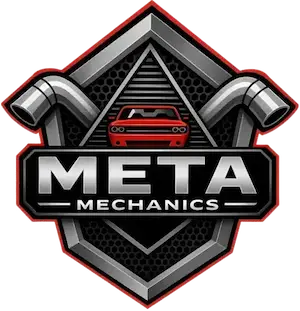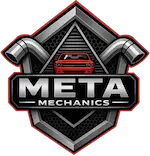At Meta Mechanics, we specialize in keeping luxury vehicles like the Range Rover HSE in top condition. Recently, we completed a Turbocharger Repair job for a Range Rover HSE that was experiencing a loss of power, excessive exhaust smoke, and turbocharger whistling sounds. After a thorough inspection, we discovered several underlying issues affecting the turbocharger’s performance. Here’s a breakdown of the problems we found and the solutions we implemented to restore the turbocharger and return the vehicle to optimal performance.
Issues Identified and Solutions Provided:
- Worn or Damaged Turbocharger Bearings
- Problem: During our inspection, we discovered that the turbocharger bearings were worn out. This caused excessive play in the turbo shaft, leading to a whining or whistling noise. Worn bearings can also cause the turbo to malfunction and affect engine performance.
- Solution: We replaced the damaged turbo bearings with high-quality OEM components. This repair restored the proper movement of the turbo shaft, eliminated the noise, and returned the turbo to full operational capacity.
- Clogged or Damaged Intercooler
- Problem: The intercooler, which helps reduce the temperature of the compressed air coming from the turbocharger, was found to be clogged with dirt and debris. A clogged intercooler can prevent the turbocharged air from cooling properly, which can lead to overheating and a loss of engine power.
- Solution: We thoroughly cleaned the intercooler and checked for any damage. Any minor leaks or cracks were sealed to ensure proper airflow. After cleaning and repairing the intercooler, the turbocharger system could efficiently cool the air, restoring engine power and performance.
- Turbocharger Wastegate Issues
- Problem: The wastegate — which regulates the pressure inside the turbocharger — was found to be stuck or malfunctioning. This caused the turbo to either underboost or overboost, leading to inconsistent power delivery and a reduction in overall performance.
- Solution: We replaced or repaired the faulty wastegate and ensured it was properly calibrated. The wastegate now opens and closes at the correct pressure, allowing the turbo to produce consistent boost and providing the vehicle with optimal power output.
- Oil Contamination in the Turbocharger System
- Problem: The turbocharger system was found to have oil contamination, which can result from a clogged oil line or a leaking oil seal. Oil contamination inside the turbocharger can cause buildup, overheating, and damage to the internal components.
- Solution: We cleaned out the oil lines and replaced any damaged seals to prevent oil leaks. We also performed an oil flush to ensure that fresh, clean oil was circulating through the turbo system. This prevents damage to the turbocharger and ensures proper lubrication, reducing the risk of future issues.
- Turbocharger Boost Leaks
- Problem: A boost leak in the intake or exhaust system was found, which caused a significant loss of turbo boost pressure. This results in decreased engine power, slower acceleration, and a general feeling of sluggishness while driving.
- Solution: We performed a pressure test to locate any leaks in the turbo intake or exhaust lines. Once identified, we sealed any gaps and replaced any damaged hoses or seals. This fixed the boost leak, allowing the turbocharger to operate at full capacity and restore the engine’s power.
Range Rover HSE Turbocharger Inspection and Diagnostics
Range Rover HSE Turbocharger Removal and Installation
Range Rover HSE Turbocharger Rebuild or Replacement
Range Rover HSE Turbocharger Shaft and Bearing Inspection
Range Rover HSE Wastegate and Actuator Inspection
Range Rover HSE Turbo Oil Line Inspection and Replacement
Range Rover HSE Intercooler and Piping Inspection
Range Rover HSE Turbocharger Seal Replacement
Range Rover HSE Exhaust Gas Temperature Sensor Check
Range Rover HSE Turbocharger Boost Pressure Testing
Range Rover HSE Check for Oil Leaks and Fixing
Range Rover HSE Turbo Performance Tuning and Calibration


